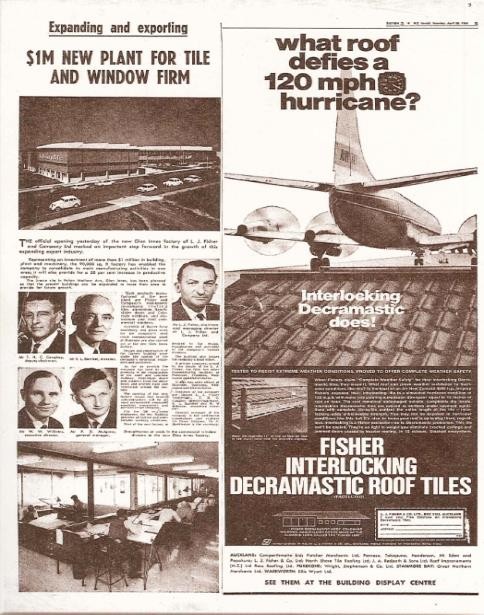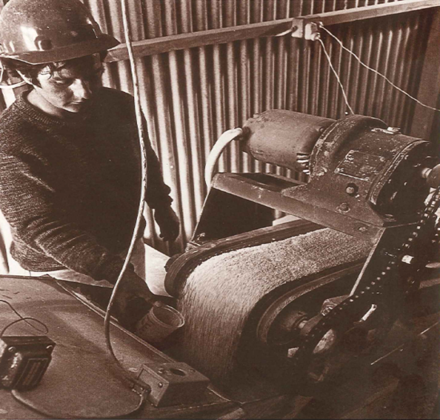Early in 1954, Mr. L.J. Fisher was perusing an English trade magazine in his New Zealand home, when an advertisement for a mastic product caught his eye. Working from the assumption that a factory-produced local equivalent would almost certainly prove to be an extremely saleable domestic product in New Zealand, he flew to England to acquire the lights to manufacture and sell to markets outside the United Kingdom.
In a subsequent trip to England, Mr. Fisher met a man named Ben Booth. Mr. Booth was a talented artist and during the war, used his skills to paint imaginary buildings as a diversion on the grass landing strips used by the Royal Air Force. The view from the air deceived the German bombers to look elsewhere for landing strips to target. He too, had seen the ill effects of shiny metal buildings illuminated by dropped flares from German attack planes.
However, Mr. Booth’s solution to protecting and camouflaging corrugated metal buildings during the war was quite different. Instead of using a mastic spray, he painted the shiny corrugated metal buildings with road tar and sprinkled crushed stone chips on top. After the war, demolition began on the temporary structures. Mr. Booth was surprised by the excellent condition of the buildings. He also had the basis for a business in Britain. Mr. Booth began advertising a roofing and cladding product made of metal, covered in tar, and bonded with stone chips.
Mr. Fisher often visited Britain scouting products for use in New Zealand and other parts of the world. While in Britain, he met Mr. Booth and observed the stone coated finish with intrigue. Mr. Fisher had already established himself as a savvy industrialist and had developed a manufacturing plant coating sheets of corrugated iron.
Mr. Fisher’s newly found recognition that the coating had strong holding power made him recall the stone chip finish he had seen in Britain with Mr. Booth. The idea germinated into a new roofing product that would combine the strength and durability of steel with the lasting protection of a stone chip finish on the exterior. If the metal could be stamped into any shape, it could be the basis for various types of roofing profiles—tile, shake, and shingle all suddenly became possible.
The original coating has since been replaced with a much stronger acrylic basecoat. Utilizing an acrylic technology has allowed DECRA products to withstand some of the harshest climates worldwide. Over the years, DECRA Roofing Systems has made advancements in production, styles, color, and installation methods, but the product’s origins will forever remain an ingenious solution to a wartime crisis that has benefited people around the world for over 60 years.




